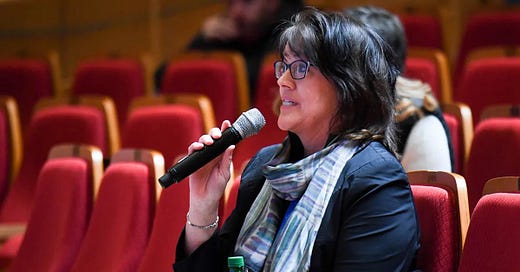Press Woe: Why Christine Brennan’s WNBA coverage is a journalistic reckoning that goes beyond the game...
Christine Brennan's time in the WNBA is a media member's Rorschach Test and it’s time we let an inside conversation out into the open.
I’m sure you’ve heard the term “inside conversations” before. Essentially it’s a concept of ‘WE can talk about this because we have a familiarity of what’s happening here but YOU cannot’. On some level and for some conversations, I get the thinking. If you’re not well versed in a topic and you’re seeing those who are debate on it…maybe stay out of it.
Bu…
Keep reading with a 7-day free trial
Subscribe to No Cap Space WBB to keep reading this post and get 7 days of free access to the full post archives.




